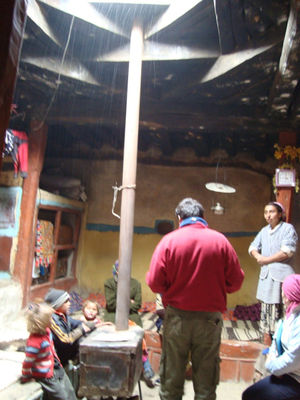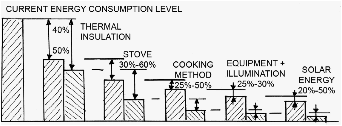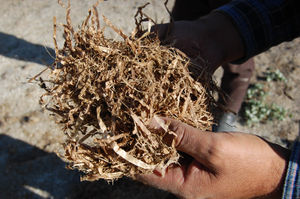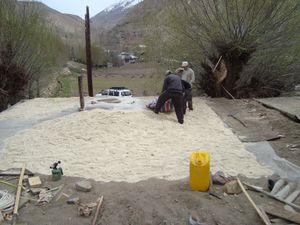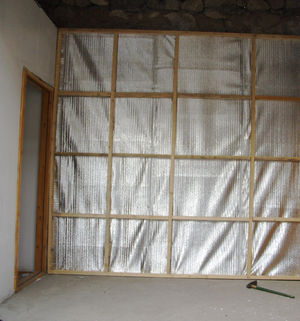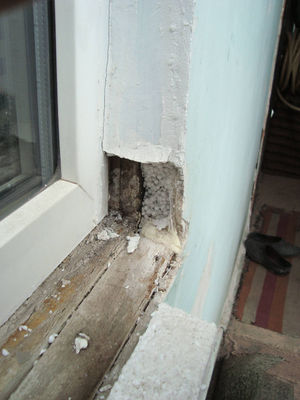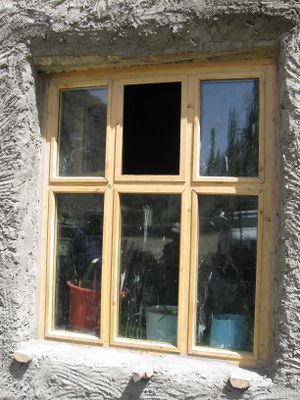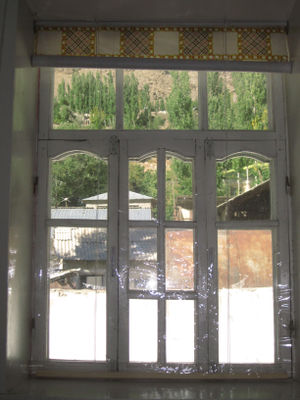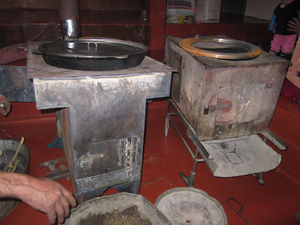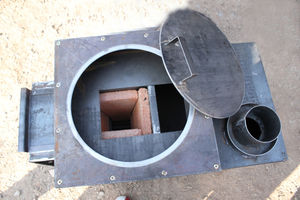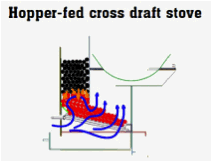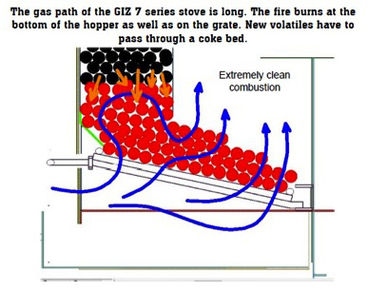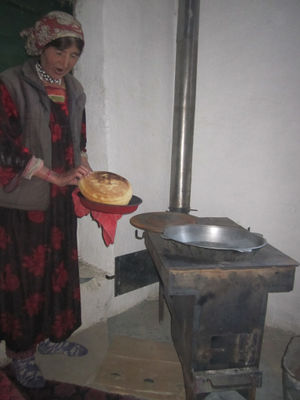Knowledge fuels change - Support energypedia!
For over 10 years, energypedia has been connecting energy experts around the world — helping them share knowledge, learn from each other, and accelerate the global energy transition.
Today, we ask for your support to keep this platform free and accessible to all.
Even a small contribution makes a big difference! If just 10–20% of our 60,000+ monthly visitors donated the equivalent of a cup of coffee — €5 — Energypedia would be fully funded for a whole year.
Is the knowledge you’ve gained through Energypedia this year worth €5 or more?
Your donation keeps the platform running, helps us create new knowledge products, and contributes directly to achieving SDG 7.
Thank you for your support, your donation, big or small, truly matters!
Difference between revisions of "Heating - Indoor Air Temperature"
***** (***** | *****) |
***** (***** | *****) m |
||
| (8 intermediate revisions by 4 users not shown) | |||
| Line 1: | Line 1: | ||
| − | [[File:GIZ HERA Cooking Energy Compendium small.png|left|831px|GIZ HERA Cooking Energy Compendium|alt=GIZ HERA Cooking Energy Compendium small.png|link=GIZ HERA Cooking Energy Compendium]]<br/> | + | [[File:GIZ HERA Cooking Energy Compendium small.png|left|831px|GIZ HERA Cooking Energy Compendium|alt=GIZ HERA Cooking Energy Compendium small.png|link=GIZ HERA Cooking Energy Compendium]]<br/><br/><!-- |
| − | < | + | -->{{#ifeq: {{#show: {{PAGENAME}} |?Hera category}} | Cooking Energy System |'''[[GIZ HERA Cooking Energy Compendium#Cooking Energy Technologies and Practices|Cooking Energy System]]''' {{!}} | [[GIZ HERA Cooking Energy Compendium#Cooking Energy Technologies and Practices|Cooking Energy System]] {{!}} | }} <!-- |
| + | |||
| + | -->{{#ifeq: {{#show: {{PAGENAME}} |?Hera category}} | Basics |'''[[GIZ HERA Cooking Energy Compendium#Basics about Cooking Energy|Basics]]''' {{!}} | [[GIZ HERA Cooking Energy Compendium#Basics about Cooking Energy|Basics]] {{!}} | }} <!-- | ||
| + | |||
| + | -->{{#ifeq: {{#show: {{PAGENAME}} |?Hera category}} | Policy Advice |'''[[GIZ HERA Cooking Energy Compendium#Policy Advice on Cooking Energy|Policy Advice]]''' {{!}} | [[GIZ HERA Cooking Energy Compendium#Policy Advice on Cooking Energy|Policy Advice]] {{!}} | }} <!-- | ||
| + | |||
| + | -->{{#ifeq: {{#show: {{PAGENAME}} |?Hera category}} | Planning |'''[[GIZ HERA Cooking Energy Compendium#Planning Cooking Energy Interventions|Planning]]''' {{!}} | [[GIZ HERA Cooking Energy Compendium#Planning Cooking Energy Interventions|Planning]] {{!}} | }} <!-- | ||
| + | |||
| + | -->{{#ifeq: {{#show: {{PAGENAME}} |?Hera category}} | ICS Supply |'''[[GIZ HERA Cooking Energy Compendium#Designing and Implementing Improved Cookstoves .28ICS.29 Supply Interventions|Designing and Implementing ICS Supply]]''' {{!}} | [[GIZ HERA Cooking Energy Compendium#Designing and Implementing Improved Cookstoves .28ICS.29 Supply Interventions|Designing and Implementing ICS Supply]] {{!}} | }} <!-- | ||
| + | |||
| + | -->{{#ifeq: {{#show: {{PAGENAME}} |?Hera category}} | Woodfuel Supply |'''[[GIZ HERA Cooking Energy Compendium#Designing and Implementing Woodfuel Supply Interventions|Designing and Implementing Woodfuel Supply]]''' {{!}} | [[GIZ HERA Cooking Energy Compendium#Designing and Implementing Woodfuel Supply Interventions|Designing and Implementing Woodfuel Supply]] {{!}} | }} <!-- | ||
| + | |||
| + | -->{{#ifeq: {{#show: {{PAGENAME}} |?Hera category}} | Climate Change |'''[[GIZ HERA Cooking Energy Compendium#Climate Change Related Issues|Climate Change]]''' | [[GIZ HERA Cooking Energy Compendium#Climate Change Related Issues|Climate Change]] {{!}} | }} <!-- | ||
| + | |||
| + | -->{{#ifeq: {{#show: {{PAGENAME}} |?Hera category}} | Extra |'''[[GIZ HERA Cooking Energy Compendium#Climate Change Related Issues|Extra]]''' | [[GIZ HERA Cooking Energy Compendium#Climate Change Related Issues|Extra]] }} | ||
<br/> | <br/> | ||
| − | |||
= Overview<br/> = | = Overview<br/> = | ||
| Line 18: | Line 31: | ||
'''Millenium Development Goals (MDG)''', as the following: | '''Millenium Development Goals (MDG)''', as the following: | ||
| + | |||
*Education (MDG 2) – indoor air temperature in social and public buildings, such as schools and hospitals, | *Education (MDG 2) – indoor air temperature in social and public buildings, such as schools and hospitals, | ||
*Gender quality and empower women (MDG 3), | *Gender quality and empower women (MDG 3), | ||
| Line 25: | Line 39: | ||
<br/> | <br/> | ||
| − | {| cellspacing="1" cellpadding="1" border="1 | + | {| style="width: 100%" cellspacing="1" cellpadding="1" border="1" |
|- | |- | ||
| | | | ||
| Line 39: | Line 53: | ||
<br/> | <br/> | ||
| − | Despite this high importance and relevance of indoor air temperature, it has been so far not adequately addressed in the field of development cooperation.<br/>Though there is a lot of knowledge available in developed countries, for example on thermal insulation and efficient | + | Despite this high importance and relevance of indoor air temperature, it has been so far not adequately addressed in the field of development cooperation.<br/>Though there is a lot of knowledge available in developed countries, for example on thermal insulation and efficient heating stoves, little experience and knowledge are available on appropriate solutions for developing countries. This results in little available information on fuel demand and supply, technical heating stove designs, additional technical measures like house improvements and dissemination approaches for affordable, acceptable and accessible solutions in developing countries. |
<br/> | <br/> | ||
| − | {| cellspacing="1" cellpadding="1" border="1 | + | {| style="width: 100%" cellspacing="1" cellpadding="1" border="1" |
|- | |- | ||
| | | | ||
| Line 60: | Line 74: | ||
However, there are a number of different factors influencing indoor air temperature, such as: | However, there are a number of different factors influencing indoor air temperature, such as: | ||
| + | |||
#[[Heating - Indoor Air Temperature#Housing conditions|Housing conditions, e.g. construction, thermal insulation]] | #[[Heating - Indoor Air Temperature#Housing conditions|Housing conditions, e.g. construction, thermal insulation]] | ||
#[[Heating - Indoor Air Temperature#Fuels for heating|Fuels for space heating (quality and quantity)]] | #[[Heating - Indoor Air Temperature#Fuels for heating|Fuels for space heating (quality and quantity)]] | ||
| Line 71: | Line 86: | ||
<br/> | <br/> | ||
| + | <br/> | ||
= Housing Conditions<br/> = | = Housing Conditions<br/> = | ||
| Line 78: | Line 94: | ||
<br/> | <br/> | ||
| − | {| cellspacing="1" cellpadding="1" border="1 | + | {| style="width: 100%" cellspacing="1" cellpadding="1" border="1" |
|- | |- | ||
| | | | ||
| Line 100: | Line 116: | ||
<u>The selection of the methods depends on:</u> | <u>The selection of the methods depends on:</u> | ||
| + | |||
*Climatic conditions of the area | *Climatic conditions of the area | ||
*Insulation of newly build houses or existent houses | *Insulation of newly build houses or existent houses | ||
| Line 109: | Line 126: | ||
<u>The function of thermal insulation materials is based on three principles:</u> | <u>The function of thermal insulation materials is based on three principles:</u> | ||
| + | |||
*Conduction – describes the heat transfer through a material | *Conduction – describes the heat transfer through a material | ||
*Radiation – describes the ability of a matter to emit heat | *Radiation – describes the ability of a matter to emit heat | ||
| Line 119: | Line 137: | ||
<br/> | <br/> | ||
| − | {| cellspacing="0" cellpadding="0" border="1 | + | {| style="width: 100%" cellspacing="0" cellpadding="0" border="1" |
|- | |- | ||
| style="width: 262px" | | | style="width: 262px" | | ||
| Line 142: | Line 160: | ||
<br/> | <br/> | ||
| − | {| cellspacing="0" cellpadding="0" border="1 | + | {| style="width: 100%" cellspacing="0" cellpadding="0" border="1" |
|- | |- | ||
| style="width: 259px" | | | style="width: 259px" | | ||
| Line 167: | Line 185: | ||
<br/> | <br/> | ||
| − | {| cellspacing="0" cellpadding="0" border="1 | + | {| style="width: 100%" cellspacing="0" cellpadding="0" border="1" |
|- | |- | ||
| style="width: 307px" | | | style="width: 307px" | | ||
| Line 187: | Line 205: | ||
Independently, which insulation material and method are chosen, thermal insulation in existing houses requires: | Independently, which insulation material and method are chosen, thermal insulation in existing houses requires: | ||
| + | |||
*local expertise for planning, and construction | *local expertise for planning, and construction | ||
*knowledge and skills for the respective processing and the installation methods, | *knowledge and skills for the respective processing and the installation methods, | ||
| Line 209: | Line 228: | ||
<br/> | <br/> | ||
| + | <br/> | ||
== Further Information<br/> == | == Further Information<br/> == | ||
| Line 217: | Line 237: | ||
*GERES (2013): [http://www.geres.eu/en/resources/publications/item/188-practical-guidance-for-scaling-up-of-sustainable-buildings-and-energy-projects Practical Guidance for Scaling-Up of Sustainable Buildings and Energy Projects] | *GERES (2013): [http://www.geres.eu/en/resources/publications/item/188-practical-guidance-for-scaling-up-of-sustainable-buildings-and-energy-projects Practical Guidance for Scaling-Up of Sustainable Buildings and Energy Projects] | ||
*GERES (2012): [http://www.geres.eu/en/resources/publications/item/184-innovative-low-energy-habitat-solutions Innovative Low-energy Habitat Solutions - Reducing pressures on rural communities and fragile eco-sytsems in the trans-Himalayas] | *GERES (2012): [http://www.geres.eu/en/resources/publications/item/184-innovative-low-energy-habitat-solutions Innovative Low-energy Habitat Solutions - Reducing pressures on rural communities and fragile eco-sytsems in the trans-Himalayas] | ||
| − | *[ | + | *[[File:Monitoring Report Thermal Insulation Gorno-Badakhshan Tajikistan.pdf|180px|GIZ (2012): Monitoring Report: Thermal insulation in Gorno-Badakhshan|alt=GIZ (2012): Monitoring Report: Thermal insulation in Gorno-Badakhshan]] |
*[http://naturalresources-centralasia.org/assets/files/2010-09-15_product_documentation_thermal_FINAL_eng.pdf GIZ (2010): Micro loans for thermal insulation - A Product Documentation Based on Experience in Tajik Gorno-BadakhshanExperience on supporting thermal insulation through micro loans in Gorno-Badakhshan in Tajikistan.] Applied thermal insulation measures are the insulation of ceiling, roof or floor with natural insulation materials and the installation of double-glazed windows and roof hatch windows, as well as doors. In English. | *[http://naturalresources-centralasia.org/assets/files/2010-09-15_product_documentation_thermal_FINAL_eng.pdf GIZ (2010): Micro loans for thermal insulation - A Product Documentation Based on Experience in Tajik Gorno-BadakhshanExperience on supporting thermal insulation through micro loans in Gorno-Badakhshan in Tajikistan.] Applied thermal insulation measures are the insulation of ceiling, roof or floor with natural insulation materials and the installation of double-glazed windows and roof hatch windows, as well as doors. In English. | ||
*[http://www.nienhuys.info/documents-papers.html Sjoerd Nienhuys (2000): Wall Insulation Techniques for Buildings in High Mountain Areas and further information as well on the construction of roof-hatch windows]. | *[http://www.nienhuys.info/documents-papers.html Sjoerd Nienhuys (2000): Wall Insulation Techniques for Buildings in High Mountain Areas and further information as well on the construction of roof-hatch windows]. | ||
| Line 228: | Line 248: | ||
<span id="1346309404005s" style="display: none"></span>'''Further Links''' | <span id="1346309404005s" style="display: none"></span>'''Further Links''' | ||
| + | |||
*[http://passivesolar.sustainablesources.com/#guidelines General information on the use of solar energy in buildings]. | *[http://passivesolar.sustainablesources.com/#guidelines General information on the use of solar energy in buildings]. | ||
*Center for Energy Efficient Building in Central Asia (CEEBA) - [http://www.ceeba.kg/?ln=en Organisation with activities on thermal insulation of buildings mainly with natural insulation materials (e.g. reed and straw ball houses) in Central Asia] | *Center for Energy Efficient Building in Central Asia (CEEBA) - [http://www.ceeba.kg/?ln=en Organisation with activities on thermal insulation of buildings mainly with natural insulation materials (e.g. reed and straw ball houses) in Central Asia] | ||
| Line 237: | Line 258: | ||
<br/> | <br/> | ||
| + | <br/> | ||
| + | |||
| + | <br/> | ||
= <br/><br/>Fuels for Heating<br/> = | = <br/><br/>Fuels for Heating<br/> = | ||
| − | Especially in high mountains with dry climatic conditions, firewood is a scarce fuel resource. In the mountainous areas of Asia, most households use 70–80% of primary energy directly for cooking and 20–25% directly for space heating. But traditional cookstoves emit heat to the surrounding, thus heating the room. The actual service provided by the energy is calculated to be 60% for heating the surrounding space and only 40% for cooking (Hulscher, 1997).<br/>The supply with fossil fuel, like coal, gas or oil is characterized through high fuel prizes and unreliable fuel supply, especially in mountain regions due to challenging and difficult infrastructure. In case, electricity supply or the supply with fossil fuel resources is abundant, households of rural areas depend on biomass fuel to cover their energy needs.<br/>Space heating requires additional amounts of fuel besides for cooking, forcing people to spend many hours gathering [[Cooking with Woodfuels (Firewood and Charcoal)|firewood]] over long distances, to prepare [[Cooking with | + | Especially in high mountains with dry climatic conditions, firewood is a scarce fuel resource. In the mountainous areas of Asia, most households use 70–80% of primary energy directly for cooking and 20–25% directly for space heating. But traditional cookstoves emit heat to the surrounding, thus heating the room. The actual service provided by the energy is calculated to be 60% for heating the surrounding space and only 40% for cooking (Hulscher, 1997).<br/>The supply with fossil fuel, like coal, gas or oil is characterized through high fuel prizes and unreliable fuel supply, especially in mountain regions due to challenging and difficult infrastructure. In case, electricity supply or the supply with fossil fuel resources is abundant, households of rural areas depend on biomass fuel to cover their energy needs.<br/>Space heating requires additional amounts of fuel besides for cooking, forcing people to spend many hours gathering [[Cooking with Woodfuels (Firewood and Charcoal)|firewood]] over long distances, to prepare [[Cooking with Dung|dung]] or to spend a major share of their income to purchase fuel, if available. Livestock farming is a common land use practise in rural mountain areas, thus providing dung as an additional fuel resource. Due to the low heating value, dung is a poor fuel for heating and huge amounts are needed. Investigation from German Agro Action in Tajikistan (Fuel consumption assessment WHH TJK 1058) show, that the average annual animal dung consumption per household is around 8,5 t only for heating, and additionally 5,8 t for cooking in summer and 2,7 t for bread baking. |
| + | |||
| + | <br/> | ||
<br/> | <br/> | ||
| Line 255: | Line 281: | ||
Based on the purpose the following categories of heating stoves are distinguished: | Based on the purpose the following categories of heating stoves are distinguished: | ||
| + | |||
*Heating stove | *Heating stove | ||
*Combined heating-cooking stoves | *Combined heating-cooking stoves | ||
| Line 266: | Line 293: | ||
Preconditions for a complete combustion of firewood are: | Preconditions for a complete combustion of firewood are: | ||
| + | |||
*Adequate size of the combustion chamber, because firewood is mainly burning in a big wood-gas-flame (83% of the weight of firewood combust as wood gas) | *Adequate size of the combustion chamber, because firewood is mainly burning in a big wood-gas-flame (83% of the weight of firewood combust as wood gas) | ||
*An insulated combustion chamber for high combustion temperature between minimum 600°C and 1000°C. | *An insulated combustion chamber for high combustion temperature between minimum 600°C and 1000°C. | ||
| Line 278: | Line 306: | ||
<br/> | <br/> | ||
| − | {| cellspacing="1" cellpadding="1" border="1 | + | {| style="width: 100%" cellspacing="1" cellpadding="1" border="1" |
|- | |- | ||
| | | | ||
| Line 295: | Line 323: | ||
The methods have in common: | The methods have in common: | ||
| + | |||
*Only small portion of the fuel is ignited at once | *Only small portion of the fuel is ignited at once | ||
*Newly evaporated volatiles are passed through a bed of hot coke | *Newly evaporated volatiles are passed through a bed of hot coke | ||
| Line 304: | Line 333: | ||
<br/> | <br/> | ||
| − | {| cellspacing="1" cellpadding="1" border="1 | + | {| style="width: 100%" cellspacing="1" cellpadding="1" border="1" |
|- | |- | ||
| | | | ||
| Line 315: | Line 344: | ||
|} | |} | ||
| − | {| cellspacing="1" cellpadding="1" border="1 | + | {| style="width: 100%" cellspacing="1" cellpadding="1" border="1" |
|- | |- | ||
| | | | ||
| Line 337: | Line 366: | ||
<br/> | <br/> | ||
| − | {| cellspacing="1" cellpadding="1" border="1 | + | {| style="width: 100%" cellspacing="1" cellpadding="1" border="1" |
|- | |- | ||
| | | | ||
| Line 376: | Line 405: | ||
During testing of different kinds of heat exchanger in Gorno-Badakhshan, Tajikistan the following obstacles have been observed: | During testing of different kinds of heat exchanger in Gorno-Badakhshan, Tajikistan the following obstacles have been observed: | ||
| + | |||
*Installation of heat exchanger on old, partly broken stoves hampered the draft resulting the smoke in the room | *Installation of heat exchanger on old, partly broken stoves hampered the draft resulting the smoke in the room | ||
*Unfirm installation and therefore unsafe construction with the stove and pipe within the house | *Unfirm installation and therefore unsafe construction with the stove and pipe within the house | ||
| Line 408: | Line 438: | ||
<br/> | <br/> | ||
| + | |||
*How many households suffer from low indoor air temperatures? | *How many households suffer from low indoor air temperatures? | ||
*Adequate methods to measure efficiency or to compare the specific fuel consumption for (a) space heating ovens or (b) combined heating and cooking stoves? | *Adequate methods to measure efficiency or to compare the specific fuel consumption for (a) space heating ovens or (b) combined heating and cooking stoves? | ||
| Line 415: | Line 446: | ||
<br/> | <br/> | ||
| − | <br/> | + | = Further Information<br/> = |
| + | |||
| + | *[https://www.youtube.com/watch?v=9z-EGVeKTrc&feature=youtu.be More heat with less wood] - video by UNECE and FAO (2016). Making a fire is easy, but making efficient use of wood energy at home is everything else but easy! The affected sectors of development work for the use of wood for heating and cooking are diverse- thermal insulation of housing, heating technology, consumer health and behavioural aspects of wood use along with ensuring a minimum quality of the natural resource wood, to name just a few. | ||
<br/> | <br/> | ||
| Line 431: | Line 464: | ||
[[GIZ HERA Cooking Energy Compendium|--> Back to Overview GIZ HERA Cooking Energy Compendium]]<br/><br/><br/><br/> | [[GIZ HERA Cooking Energy Compendium|--> Back to Overview GIZ HERA Cooking Energy Compendium]]<br/><br/><br/><br/> | ||
| + | {{#set: Hera category=Extra}} | ||
| + | |||
| + | [[Category:Heating_Stoves]] | ||
| + | [[Category:Energy_Efficiency_in_Buildings]] | ||
| + | [[Category:Tajikistan]] | ||
| + | [[Category:Millennium_Development_Goals_(MDGs)]] | ||
| + | [[Category:Nepal]] | ||
[[Category:Cooking_Energy_Compendium_(GIZ_HERA)]] | [[Category:Cooking_Energy_Compendium_(GIZ_HERA)]] | ||
| − | |||
Latest revision as of 13:31, 4 September 2018
Cooking Energy System | Basics | Policy Advice | Planning | Designing and Implementing ICS Supply | Designing and Implementing Woodfuel Supply | Climate Change | Extra
Overview
Human beings require a certain level of ambient air temperature in order to remain healthy. The mortality rate due to respiratory diseases, high blood pressure, and stroke risks increases when room temperatures fall below 20°C. According to the Poor People Energy Outlook (2014) a modern access to heating energy means a daytime indoor air temperature of 18°C. This temperauture level should be reached without indoor air smoke as well as affordable efforts in purchasing and/or collecting heating fuel (PPEO 2014, page 13).
In many parts of this world, there are no problems in respect to these recommendations without the need for specific actions. However, in other areas – mainly in high altitude regions and the temperate zone – indoor air temperatures cannot be maintained on the required level without specific interventions. Examples for such geographic regions in developing countries are the South American Andes, the mountainous regions of Central Asia (Pamir, Himalaya, Alai, Tienshan) and the Atlas mountains in Morocco.
Indoor air temperature and therefore respective needs for heating is influenced by climate seasonality (duration of winter month) and altitude. An overall number of households with needs to maintain an adequate indoor air temperature in developing countries is not estimated so far. Estimations by Hulscher et al. (FAO, 1997) indicate, that half a billion people in South and South-East Asia alone use stoves for space heating, whether as an absolute daily necessity in the coldest climates or for comfort during cooler seasons or at night.
Respective needs for maintaining indoor air temperature, like heating, contributes to energy poverty and it is linked to a number of
Millenium Development Goals (MDG), as the following:
- Education (MDG 2) – indoor air temperature in social and public buildings, such as schools and hospitals,
- Gender quality and empower women (MDG 3),
- Health (MDG 4 and 5), and
- Environmental sustainability (MDG7) – due to fuel consumption and emission for heating.
|
|
Picture[1]: In the high mountains of Nepal, households use an open fire for cooking and heating purposes indoor. Besides, the high needs of fuel wood, the indoor air temperatures are insufficient during the winter, and the exposure to smoke causes serious respiratory diseases and injuries caused by the open fire. |
Despite this high importance and relevance of indoor air temperature, it has been so far not adequately addressed in the field of development cooperation.
Though there is a lot of knowledge available in developed countries, for example on thermal insulation and efficient heating stoves, little experience and knowledge are available on appropriate solutions for developing countries. This results in little available information on fuel demand and supply, technical heating stove designs, additional technical measures like house improvements and dissemination approaches for affordable, acceptable and accessible solutions in developing countries.
|
|
Picture[2]: A house in the Western part of the Pamirs in Tajikistan, showing the typical construction of the Pamirian house. The hole in the roof, which is traditionally determined, is not closed because of missing finances and knowledge. Thus heat from the stove is leaving the room immediately and snow and cold air enter the room the whole winter season during day and night. |
Commonly, “space heating” is the core activity associated with the necessity to alleviate room temperatures.
However, there are a number of different factors influencing indoor air temperature, such as:
- Housing conditions, e.g. construction, thermal insulation
- Fuels for space heating (quality and quantity)
- Space heating devices, e.g. traditional heating stove, improved heating stoves, multi-purpose stoves, heat exchanger
- User behaviour, e.g. fuel processing, use of oven, ventilation habits
Each of the factors will be described in the following chapters.
Housing Conditions
The effect of improved cooking-heating stoves on indoor air temperature will be small, in case the heated room is not insulated, as the generated heat will leave the room immediately. In cold mountain areas, thermal insulation of buildings takes priority over improving space heating stoves or cooking stoves to gain overall minimum room temperatures and firewood savings (compare figure below).
|
Figure[3]: Estimated savings possible on energy consumption in Afghanistan mountain areas |
Especially, houses of the poor are badly insulated. In some regions, like in Pakistan, Afghanistan and Tajikistan, the roof has a whole, which is partly traditionally determined and functions as a smoke outlet, in case the stove has no chimney. Often windows are just a hole, which is closed by cellophane during winter with no insulating effect. In other regions, like in the Andes, people live in small low huts, which are badly ventilated to prevent heat losses, and therefore occupants are exposed to smoke harming the health of the dwellers.
Thermal Insulation
In developing countries, especially poor people are still living in drafty houses with a lot of air exchange per hour. Thermal insulation enables to retain an acceptable temperature in rooms, because it prevents a high air exchange rate per hour in the house. There are many thermal insulation methods available worldwide.
The selection of the methods depends on:
- Climatic conditions of the area
- Insulation of newly build houses or existent houses
- Availability of insulation material and skills to install
- Respective insulation value (also called R-value), which is the ratio of the temperature difference across an insulator
- Traditional perception of houses and housekeeping habits
The function of thermal insulation materials is based on three principles:
- Conduction – describes the heat transfer through a material
- Radiation – describes the ability of a matter to emit heat
- Convection – heat transfer trough temperature difference in a room, warm air moves upwards and cold air downwards
In general, natural and synthetic insulation materials are distinguished.
Natural insulation materials are functioning on the principle of conduction and convection. Thus, thick layers of insulation materials are required. The advantages of natural insulation material are the low risk concerning condensation and mould, a good regulation of moisture and temperature in winter like in summer. Using natural insulation materials, like straw, saw dust, reed, algae’s, might be limited through their availability in respective quantities and quality. For example, straw is an appropriate and cheap insulation material, when not competing as livestock fodder. Natural insulation materials have to be protected against moisture and vermin to perform insulation on the long-term.
|
Picture[4]: Algea used for thermal insulation in the Eastern part of Gorno-Badakhshan, Tajikistan |
Picture[2]: Preperation of saw dust for the insulation of a roof in Tavdem, Gorno-Badakhshan, Tajikistan |
Available synthetic insulation materials are for example expanded polystyrene, reflective foils, glass or mineral wool. In case the material has a reflective foil, the thickness of the insulation layer can be thinner as heat is reflected back to the room (radiation).
|
Picture[2]: Example of wall insulation with metalized plastic foil with a 2 mm Polyethylene (PE) layer. |
Picture[2]: Wall insulation with expanded polystyrene in the suburbs of Bishkek, Kyrgyzstan |
Windows, roof hatch windows and doors are often energy-weak parts of houses. Depending on the households budget low cost options like roll curtains can prevent draft and mitigate heat losses through windows. Double-glazed windows (plastic or wooden) are required to close airtight to prevent draft. Furthermore, double-glazed windows use the greenhouse effect, when exposed to the sun, and heat the room additionally.
Low-cost options for insulating doors are as well curtains, insulation layers of wool, rubber foam, etc. A well airtight closing mechanism with overlaps of the door frame and the door itself as well as insulation layers have to be taken into consideration for newly build in doors.
|
Picture[2]: A newly installed wooden double-glazed window in a Pamirian house in Gorno-Badakhshan, Tajikistan. The window was produced by trained local carpenters. |
Picture[2]: The design is based on placing the curtain on the inside, behind the glass window and behind the timber framing, thus reducing considerably the UV impact on the plastic. The second light blocking plasticized cotton cloth roll-up curtain is hardly affected by UV light, partly because it is often rolled up during the daytime. During nighttime it is rolled out, thus forming an insulating air-layer between the first and second curtain. In addition, a colourful curtain is a welcomed addition to the interior design of the house. |
Independently, which insulation material and method are chosen, thermal insulation in existing houses requires:
- local expertise for planning, and construction
- knowledge and skills for the respective processing and the installation methods,
- behaviour change of the occupants concerning ventilation and humidity control,
- post-fitting of roofs and walls must assure it does not affect their strength or earthquake resistance, and
- usually, adapted heating devices.
Passive Solar Heating
Passive solar designs of houses use the energy of the sun to heat up rooms, thus lowering energy requirements and keep the house comfortably warm. The goal of all passive solar heating systems is to capture the sun’s heat within the building elements. The heat gain or loss from solar energy depends on exposure of the house and on the hemisphere. In the southern hemisphere windows of the house should face north to gain most benefit from the sun, in the northern hemisphere vice versa facing south. Furthermore protection from wind, orientation of doors, and buffer spaces like porches needs to be planned.
Further Information
- Sjoerd Nienhuys (updated January 2012): Technical Working Paper Number 1: Basics of thermal insulation in high altitude areas of the himalayas.
- Sjoerd Nienhuys (updated September 2012): Technical Working Paper Number 2: Calculation examples of thermal insulation.
- Sjoerd Nienhuys (updated February 2012): Technical Working Paper Number 3 with Adjusted Values for Reflective Foils: Tables for thermal insulation in high altitude areas of the himalayas
- GERES (2013): Practical Guidance for Scaling-Up of Sustainable Buildings and Energy Projects
- GERES (2012): Innovative Low-energy Habitat Solutions - Reducing pressures on rural communities and fragile eco-sytsems in the trans-Himalayas
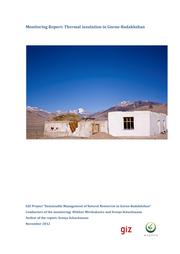
- GIZ (2010): Micro loans for thermal insulation - A Product Documentation Based on Experience in Tajik Gorno-BadakhshanExperience on supporting thermal insulation through micro loans in Gorno-Badakhshan in Tajikistan. Applied thermal insulation measures are the insulation of ceiling, roof or floor with natural insulation materials and the installation of double-glazed windows and roof hatch windows, as well as doors. In English.
- Sjoerd Nienhuys (2000): Wall Insulation Techniques for Buildings in High Mountain Areas and further information as well on the construction of roof-hatch windows.
- Sjoerd Nienhuys (n.k.): insulation Assessing the energy consumption patterns with respective solution valuation in Badakhshan/ Afghanistan: Energy, insulation and cook stove improvement in Badakhshan
- Gaia Architects (2009): Enregy Efficient Building Methods for Tajikistan (www.gaiaarkitekter.no/tjome)
- WHO (2007): Housing, Energy and Thermal Comfort
- W. Hulscher (1997): Regional Workshop on stoves used for space heating and cooking at different altitudes and /by ethnic groups
Further Links
- General information on the use of solar energy in buildings.
- Center for Energy Efficient Building in Central Asia (CEEBA) - Organisation with activities on thermal insulation of buildings mainly with natural insulation materials (e.g. reed and straw ball houses) in Central Asia
Fuels for Heating
Especially in high mountains with dry climatic conditions, firewood is a scarce fuel resource. In the mountainous areas of Asia, most households use 70–80% of primary energy directly for cooking and 20–25% directly for space heating. But traditional cookstoves emit heat to the surrounding, thus heating the room. The actual service provided by the energy is calculated to be 60% for heating the surrounding space and only 40% for cooking (Hulscher, 1997).
The supply with fossil fuel, like coal, gas or oil is characterized through high fuel prizes and unreliable fuel supply, especially in mountain regions due to challenging and difficult infrastructure. In case, electricity supply or the supply with fossil fuel resources is abundant, households of rural areas depend on biomass fuel to cover their energy needs.
Space heating requires additional amounts of fuel besides for cooking, forcing people to spend many hours gathering firewood over long distances, to prepare dung or to spend a major share of their income to purchase fuel, if available. Livestock farming is a common land use practise in rural mountain areas, thus providing dung as an additional fuel resource. Due to the low heating value, dung is a poor fuel for heating and huge amounts are needed. Investigation from German Agro Action in Tajikistan (Fuel consumption assessment WHH TJK 1058) show, that the average annual animal dung consumption per household is around 8,5 t only for heating, and additionally 5,8 t for cooking in summer and 2,7 t for bread baking.
Stoves for Heating
A main feature of an improved cooking stove is that the heat is lead to the pot and as less as possible heat is lost to the surrounding. The less heat is emitted to the sides; the better is the cooking stove efficiency. Therefore improved cooking stoves do not contribute significantly to the temperature of the room and seem to be unsuitable for space heating purposes.
Depending on availability and affordability, households are using different kinds of fuel for heating, like coal, dung and firewood, with different heating values mainly in one and the same stove. This is one challenge to tackle while designing stove models for heating.
Even more challenging for heating stove development is a multi-purpose use of stoves, like for cooking, heating, and baking.
Based on the purpose the following categories of heating stoves are distinguished:
- Heating stove
- Combined heating-cooking stoves
- Combined heating, cooking and baking stoves
Firewood Burning Heating Stoves
Considering the combustion of firewood, the main design principles of improved cooking stoves apply as well for heating stoves.
Preconditions for a complete combustion of firewood are:
- Adequate size of the combustion chamber, because firewood is mainly burning in a big wood-gas-flame (83% of the weight of firewood combust as wood gas)
- An insulated combustion chamber for high combustion temperature between minimum 600°C and 1000°C.
- Sufficient air supply in order that the high-energy wood gas combust completely.
- A draft created with a chimney which ensures a clean and efficient combustion with a fierce hot fire.
- Sufficient response time, which admits the optimal mixture of wood gas with air.
The aim of an optimal use of firewood energy can only be achieved, when the wood gases have enough time to fully cure in a hot and oxygen rich combustion chamber.
|
Comparison of an old stove (right side) and improved wood burning combined cooking-heating stove developed for Pamirian houses (with metal chimney and located in the middle of the room) and user preferences (Source: Heike Volkmer) |
Coal Burning Heating Stoves
Promising results have been achieved concerning the development of coal burning stoves in Ulaanbaatar, Mongolia. Coal has usually a high energy value per kilogram and is relatively low in oxygen compared with biomass fuel. Widely coal is associated with smoke and air pollution. This association is misleading as coal is not smoking, but the stove, because the stove was not designed to burn coal and the stove either burns not completely the coal, smoke or carbon monoxide. In Mongolia, three different methods have been identified by GIZ to burn coal cleanly.
The methods have in common:
- Only small portion of the fuel is ignited at once
- Newly evaporated volatiles are passed through a bed of hot coke
- Volatiles are cracked to make producer gas
- Ash is cleared from the places where the gases burn
- Good air-fuel ratio, as the excess air is limited
- Good primary-secondary air ration
|
Picture[5]: Coal burning stove (GTZ 7.5) developed for the yurt settlements in Ulaanbaatar |
|
Picture[6]: Hopper-fed cross draft stove and gas path | |
Testing of Heating Stoves
In comparison to cooking stoves, so far no international standards for testing the performance (efficiency, emission) of heating stoves.
A Kitchen Performance Test (KPT) can be applied to gain data on fuel savings in comparison to traditional stoves for all features (cooking, baking, heating).
Emissions from heating stove have to be measured in lab test with the respective equipment.
|
Picture[2]: An improved combined cooking-heating-baking stove developed in Gorno-Badakhshan, Tajikistan. Improvements are among others a smaller combustion chamber, improved air draft and enhanced pot hole. |
Further Information
- Ebert, H.-P.; Beimgraben, T. (2011): Heizen mit Holz in allen Ofenarten
- Bryden, M. et al. (n.k.): Designing Improved Wood Burning Heating Stoves
- Sjoerd Nienhuys (2000): Research Report on BACIP Wood Stoves for High Mountain Areas
- High Altitude Improved Metallic Stoves
- Forms/Wood Burning Handbook.pdf Forms/Wood Burning Handbook.pdf Pinal County Air Quality Control (2005): Wood Burning Handbook
- GTZ 7.5 Stove: Sustainable approach for energy saving and clean air
- Ehrlbeck, R./ Trosse, R. (2012): Improved stoves help people's health (Appropriate Technology, Vol. 39, p. 30-32)
Heat Exchange
An efficient heat exchange, which is the most characteristic part of a heating stove. The radiation of heat takes place from the fire through the stove body, chimney or additional heat exchanger. The larger the radiating surface the more heat can be used to heat the room
One kind of improving the heat exchange is the “air to air exchange”, which is easy and cheap to apply, but only makes sense, in less drafty houses. A cylindrical chimney pipe is an inefficient heat exchanger, as through a strong draft hot flue gas is vanishing fast outdoors. Thus, the heat from the fire is not used to warm up the room.
The other option to improve heat exchange is based on storing heat in masses, like water or stones. Advantages of storing heat in masses are the gently radiation of warmth to the room and thus the warming up of the room is not directly connected with the burning of fire. E.g. water stores even 5 times more heat than rocks. However, heat retaining systems based on water require a lot of care. Challenging is the increase of pressure, when water is heated up near boil as well as metal pipes or tanks, start to corrode, when constantly filled up with water. Additionally, some heat exchanger can serve for heating water, for keeping dishes warm or for baking bread.
During testing of different kinds of heat exchanger in Gorno-Badakhshan, Tajikistan the following obstacles have been observed:
- Installation of heat exchanger on old, partly broken stoves hampered the draft resulting the smoke in the room
- Unfirm installation and therefore unsafe construction with the stove and pipe within the house
- Black tar development due to reduced draft pace and due to extreme temperature differences between the chimney and the outdoor temperature
- Comfortable cleaning mechanism for heat exchanger with water tank and /or air-to-air exchanger
Smoke Hoods
The installation of smoke hoods is valuable for improving the air quality in houses. This applies especially for situation, when traditional biomass burning stoves without a chimney are used. In some cultures, the open fire has a special social, for family gatherings and culture meaning, which make the introduction of closed stoves difficult.
So far, no optimized smoke hood solutions for developing countries are available. Currently, Bosch Siemens Home Appliances Group together with the Universität der Bundeswehr München and Practical action are developing and testing smoke hoods, for example in Nepal and Kenya.
-> Project Homepage: Healthy Smoke Hoods / Practical Action
-> Smoke Hood Designer (by Practical Action and BSH)
Behaviour Change
As all new introduced devices as well thermal insulation, heating stoves and heat exchanger require a change of accustomed habits and processes. Within the project setting intermediaries should be trained, which ensure that household owners can gain more knowledge about different practises and the use as well as maintenance of devices. As described in the chapter “Awareness raising”, “Fuelwood use” and “Cooking practices”, recommendations on ventilation, opening and closing of windows and doors, indoor humidity, etc ought to be demonstrated and applied by households.
Open Questions
There is a lot of knowledge about the thermo-insulation of houses, firewood burning heatings stoves, and housing available in developed countries. But so far it is challenging to transfer this knowldege to developing countries and to offer adapted, and affordable technical improvements to the rural population in cold regions.
Further effort is needed to tackle the challenges in terms of technology development and market based distribution of solutions. The following questions are raised to initiate further discussions and research about technical solutions, lessons learned, and best practices.
- How many households suffer from low indoor air temperatures?
- Adequate methods to measure efficiency or to compare the specific fuel consumption for (a) space heating ovens or (b) combined heating and cooking stoves?
- Necessary regulations, which influence positively or prevent thermal insulation of households in countries?
- Influence of user behaviour on fuel use, emission, room temperature, and ventilation. More specific questions are such as: What is the impact of using the stove with an open door? How much is the difference in specific consumption if the door is not closed?
Further Information
- More heat with less wood - video by UNECE and FAO (2016). Making a fire is easy, but making efficient use of wood energy at home is everything else but easy! The affected sectors of development work for the use of wood for heating and cooking are diverse- thermal insulation of housing, heating technology, consumer health and behavioural aspects of wood use along with ensuring a minimum quality of the natural resource wood, to name just a few.
References
This article was originally published by GIZ HERA. It is basically based on experiences, lessons learned and information gathered by GIZ cook stove projects. You can find more information about the authors and experts of the original “Cooking Energy Compendium” in the Imprint.



